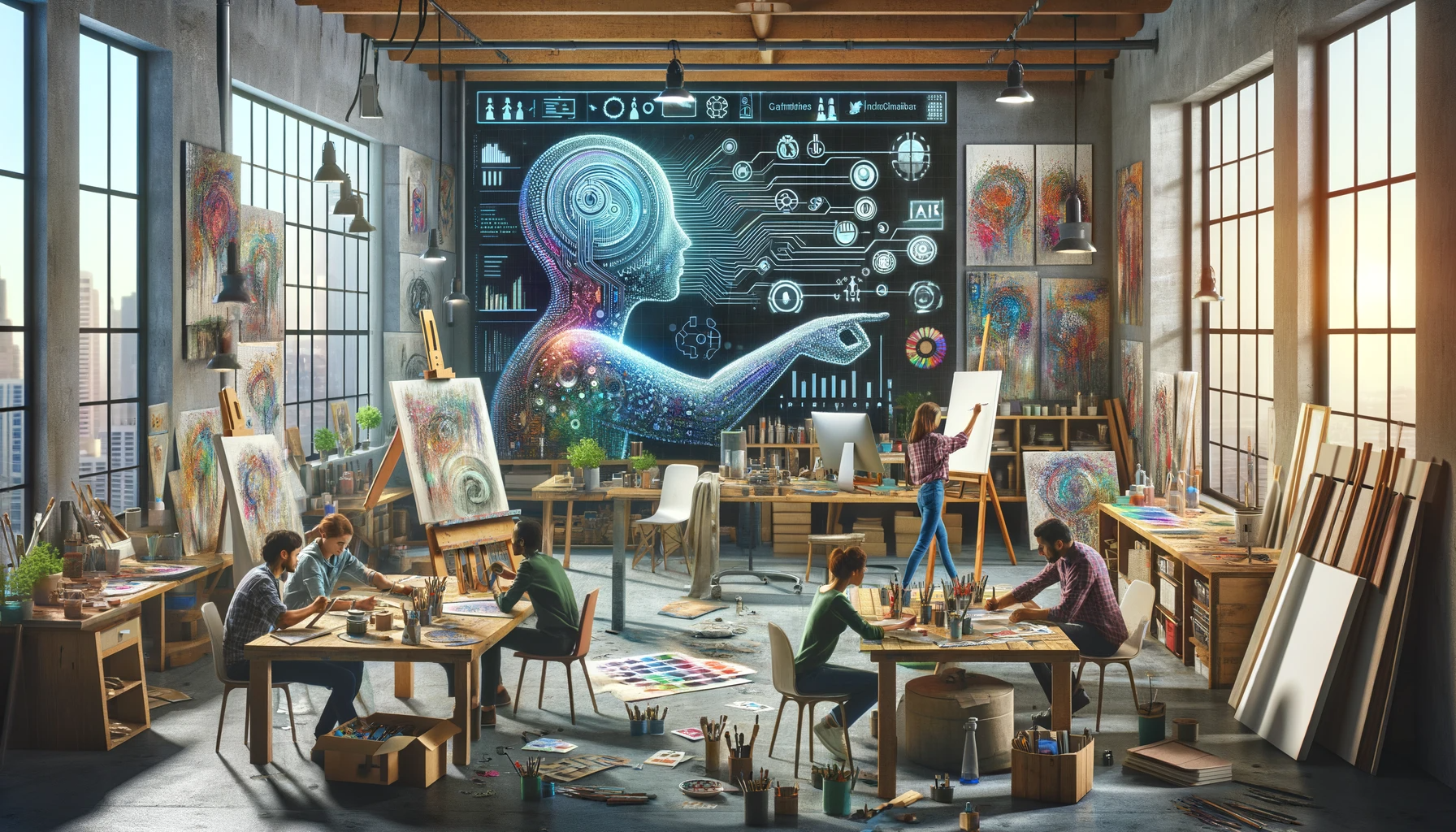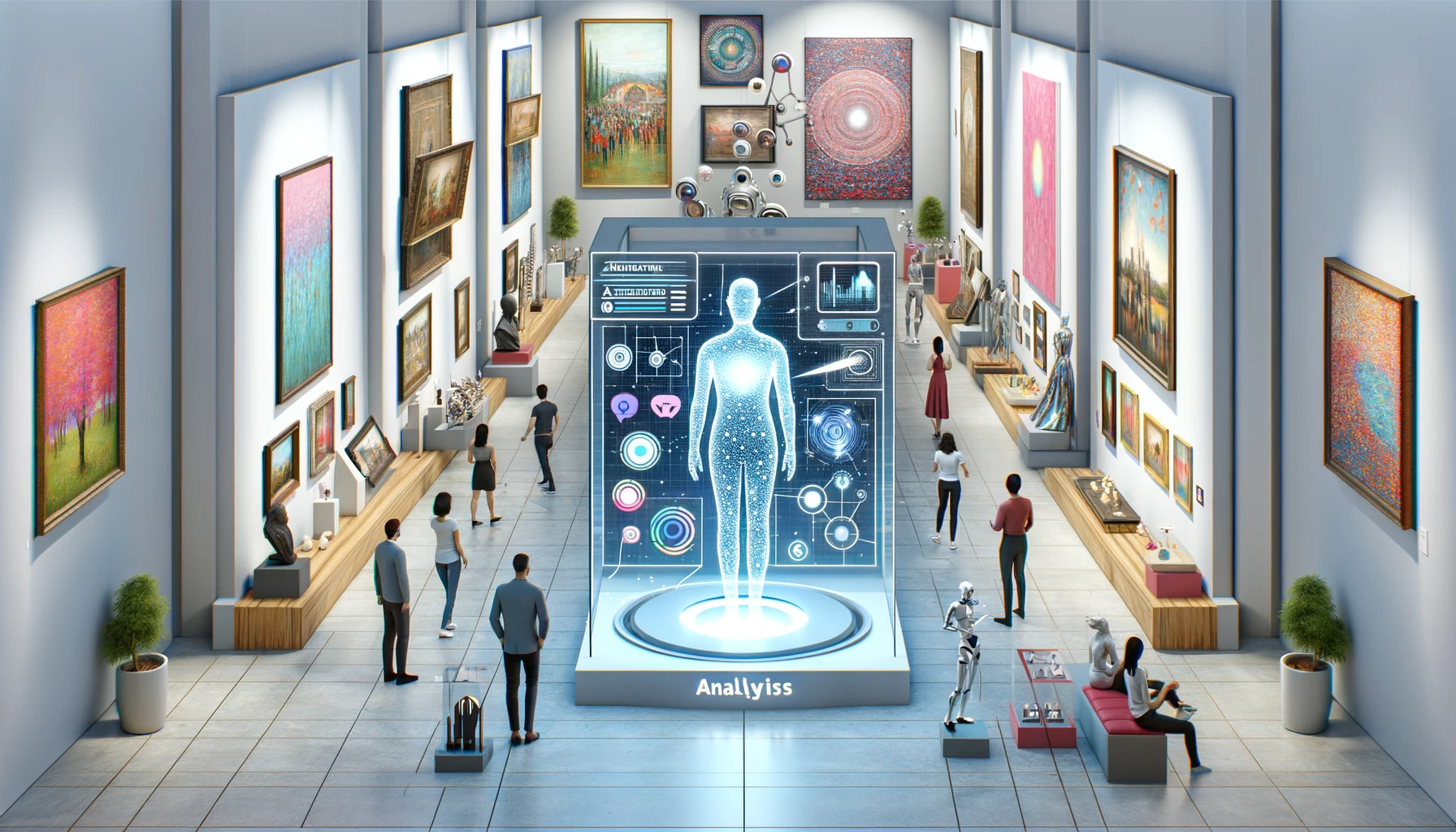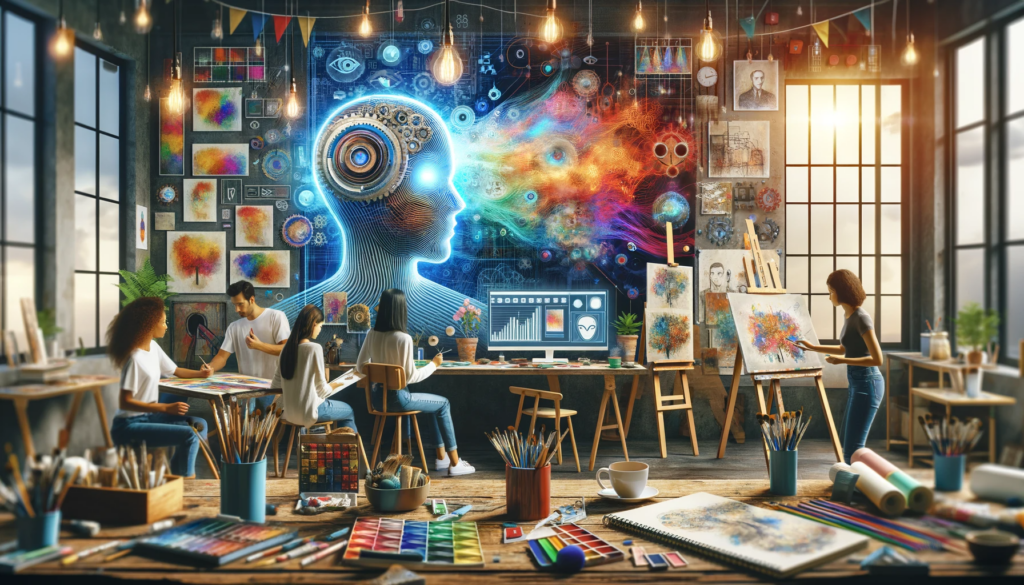Artificial Intelligence (AI) has woven its way into various facets of human existence, from healthcare to finance, revolutionizing industries and augmenting our capabilities. Among the realms that AI has ventured into is the world of art. As an embodiment of human creativity, emotion, and expression, art has long been regarded as a domain unique to human understanding and interpretation. However, recent advancements in AI have sparked a profound question: Can AI truly understand and interpret art?
This question not only delves into the capabilities of AI but also raises philosophical inquiries about the essence of art and human consciousness. To embark on this exploration, we must consider the intricate interplay between art, technology, and human perception.
The Intersection of Art and Technology
The relationship between art and technology is not new; it dates back centuries. Each technological innovation, from the invention of the camera to the computer, has introduced new dimensions to artistic expression. Artists have always been keen on exploring the creative possibilities offered by emerging technologies.
For instance, the invention of the camera brought about photography, which, in itself, was a revolutionary form of art. Artists like Man Ray and Ansel Adams pushed the boundaries of photography, demonstrating how technology could be harnessed for artistic expression.
The digital age ushered in a new era of artistic exploration. Artists now had access to digital tools that allowed for the creation of stunning visual effects, 3D modeling, and interactive installations. The boundary between traditional and digital art began to blur as artists embraced software like Photoshop and 3D modeling programs to create their masterpieces.

AI in the Art World
As technology continued to advance, AI entered the artistic landscape. AI algorithms, particularly those related to machine learning and deep learning, demonstrated an astonishing capacity to analyze vast datasets and recognize patterns. It wasn’t long before the art world recognized the potential of AI to transform various aspects of art, from creation to curation.
AI’s role in art extends to several key areas:
- AI-Generated Art: Artists and AI researchers have collaborated to create AI-generated art. Algorithms are trained on vast art datasets to produce original artworks. Prominent examples include the “Portrait of Edmond de Belamy” created by the Generative Adversarial Network (GAN) and “AICAN,” an AI artist that generates abstract art.
- Art Curation and Recommendation: AI-powered algorithms are being employed by art institutions and online platforms to recommend artworks to viewers based on their preferences and browsing history. These algorithms analyze user behavior and art metadata to make personalized suggestions.
- Art Restoration and Conservation: AI-driven tools are used to restore and preserve artworks. These tools can analyze damaged artworks, suggest restoration techniques, and even assist in the delicate process of cleaning and repairing.
- Art Authentication: AI helps in the authentication of artworks, particularly in detecting forgeries. Machine learning models can analyze brush strokes, canvas material, and other characteristics to determine the authenticity of a piece.
- Art Analysis and Style Recognition: AI algorithms can analyze artworks to identify artistic styles, influences, and patterns. They can compare an artwork to a database of known styles and artists, shedding light on potential influences.
The integration of AI into the art world has raised intriguing questions about the nature of creativity, authorship, and the boundaries of artistic expression. AI has also opened up new avenues for artists, curators, and art enthusiasts, pushing the boundaries of what is possible in the world of art.
The Challenges of Understanding Art
While AI has made significant strides in various aspects of art, the question of whether it can truly understand art remains complex. Art, in its myriad forms, carries profound cultural, emotional, and historical significance. It often conveys abstract ideas, symbolism, and subjective experiences that defy easy categorization. These challenges pose significant hurdles for AI’s capacity to comprehend and interpret art fully.
One of the fundamental difficulties lies in the subjective nature of art. What moves one person may not affect another in the same way. The emotional and personal connections that individuals forge with art defy quantification and are deeply rooted in human experiences, memories, and cultural backgrounds. AI, with its data-driven and algorithmic approach, struggles to grasp the depth of these subjective experiences.
Moreover, art often reflects societal and historical contexts, addressing complex themes such as identity, politics, and spirituality. AI algorithms, while capable of recognizing patterns and elements within artworks, may lack the cultural and historical context necessary to fully understand the significance of artistic choices. Interpretations of art can vary significantly depending on the context in which it is created and viewed.
Additionally, art often thrives on ambiguity, metaphor, and symbolism. Artists frequently employ techniques that invite viewers to engage in interpretation and reflection. AI, with its tendency toward precision and concrete results, may struggle to appreciate the richness of ambiguity and the multiplicity of meanings that art can hold.
AI and Artistic Analysis
AI has demonstrated its ability to conduct artistic analysis, albeit within certain boundaries. Machine learning algorithms can examine artworks, identifying visual elements, styles, and even potential influences. This capability has practical applications in fields such as art history and curation, enabling researchers to conduct large-scale analyses of artistic trends and influences.
One significant use of AI in artistic analysis is style recognition. Algorithms can be trained on extensive datasets of artworks from various periods and artists, allowing them to identify stylistic characteristics. For instance, an AI model can analyze brushwork, color palettes, and composition to classify an artwork within a specific artistic style, such as Impressionism or Cubism.
Moreover, AI can assist in art restoration and conservation. Restoring damaged artworks is a delicate task that requires a deep understanding of the artist’s techniques and intentions. AI can aid in this process by analyzing the artwork’s physical condition and providing suggestions for restoration methods.
Another noteworthy application is the detection of art forgeries. AI algorithms can scrutinize artworks for inconsistencies in brushwork, materials, and style, flagging potential forgeries. This has the potential to protect art collectors and institutions from purchasing counterfeit works.
The Debate Over AI’s Artistic Understanding
The debate surrounding AI’s capacity to understand art remains robust, with proponents and skeptics offering varying perspectives. Supporters argue that AI’s ability to analyze vast datasets and detect patterns grants it a unique lens through which to appreciate art. They contend that AI can unveil insights about artists’ techniques, influences, and the evolution of artistic movements, shedding new light on art history.
Critics, on the other hand, question whether AI truly comprehends art or merely mimics it. They argue that AI-generated art, while visually captivating, lacks the depth of human emotion, intention, and cultural significance that underpins much of human-created art. Critics also raise ethical concerns about the potential devaluation of art and the displacement of human artists.
Ethical considerations come into play when discussing AI’s role in the art world. AI can create art, but does this mean it possesses artistic consciousness? The distinction between the creative process of a human artist and the generative capabilities of an algorithm remains a subject of debate. Some argue that AI’s creations are fundamentally different from human art, as they lack the conscious and emotional aspects inherent to human creativity.

The Future of AI in Art Interpretation
The future of AI in art interpretation holds promise and challenges alike. As AI technology continues to advance, we can expect further refinements in AI’s ability to analyze and interpret art. This may include improved style recognition, enhanced restoration techniques, and even more sophisticated art recommendation systems.
AI’s role as a tool for artists is also likely to expand. Artists may increasingly collaborate with AI systems to explore new creative avenues and push the boundaries of artistic expression. The interplay between human creativity and AI-driven generative models will continue to evolve.
Moreover, the ongoing dialogue between human and AI interpretations of art may lead to innovative exhibitions and artistic experiments. Curators and institutions might explore how AI can augment the viewer’s experience by offering unique perspectives on classic and contemporary artworks.
As AI technology advances, ethical and philosophical questions about AI’s role in the art world will persist. Society will need to grapple with issues surrounding authenticity, authorship, and the potential homogenization of art. Ultimately, the future of AI in art interpretation hinges on our ability to strike a balance between harnessing AI’s analytical power and preserving the ineffable qualities that make art a deeply human endeavor.
